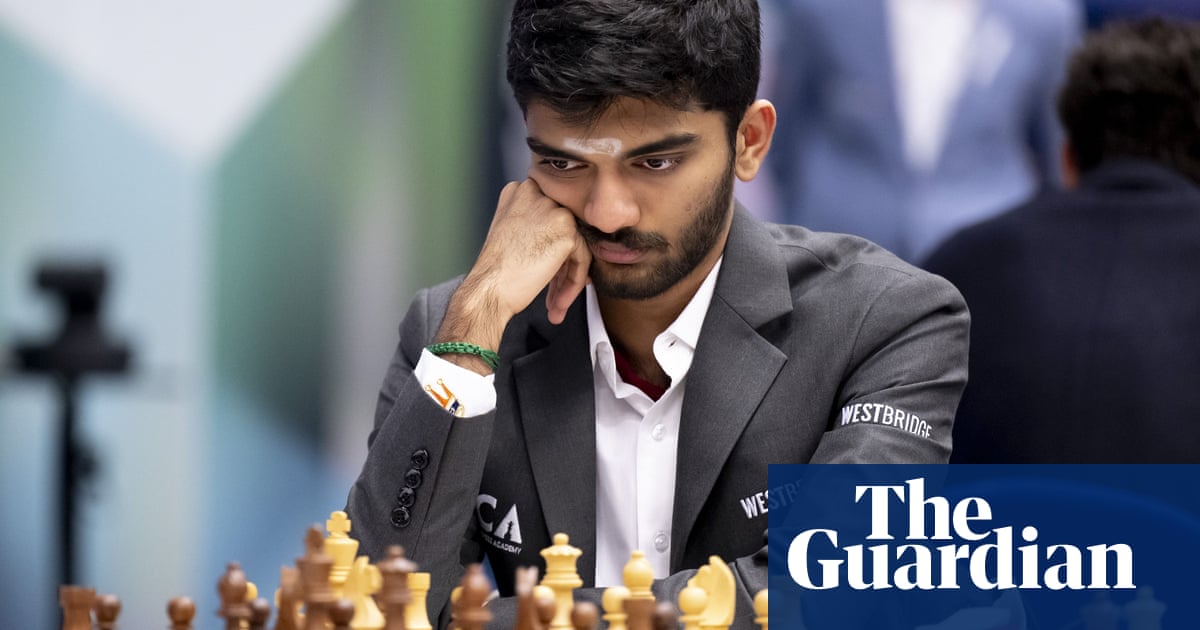 |
|
The Bucharest Grand Slam chess tournament has been a challenging event for India's world champion, Gukesh Dommaraju. Coming off disappointing performances in Freestyle chess events in North Germany and Paris, Gukesh aimed to rebound in Bucharest. However, the tournament has presented further difficulties, marked by defeats against Maxime Vachier-Lagrave of France and Alireza Firouzja, also of France, although he did manage a win against USA’s Levon Aronian in the eighth round. This mixed performance has resulted in Gukesh dropping from third to fifth in the FIDE world rankings. As the tournament nears its conclusion, with only the ninth and final round remaining, Gukesh finds himself tied for seventh place in the ten-player field, highlighting the competitive nature of the event and the pressure faced by top-ranked players. The Bucharest Grand Slam is a significant part of the European leg of the Grand Slam, sponsored by Rex Sinquefield, a St. Louis-based billionaire. This series includes rapid and blitz events in Poland and Croatia, the Sinquefield Cup in St. Louis, and a Tour Final in Sao Paulo, Brazil. The Bucharest event offers a substantial prize pool of $350,000, with $100,000 awarded to the winner, underscoring the high stakes involved and the prestige associated with the Grand Slam tournaments. The tournament also had a ceremonial start with Garry Kasparov, the 13th world champion, making the first move, reminiscing about a time when grandmasters extensively debated chess analysis in magazines, a practice diminished by the instant evaluations provided by modern computer programs. Kasparov acknowledged the trade-off, noting the loss of some beauty in detailed analysis but recognizing the benefit of accurate position evaluations. The tournament's leaderboard is currently headed by Praggnanandhaa Raameshbabu, another Indian player, who is leading by half a point. His strong performance in Bucharest follows his earlier victory at the Tata Steel Wijk aan Zee tournament in January, positioning him as a formidable competitor and a rising star in the chess world. In round four, the game between Vachier-Lagrave and Gukesh featured an interesting maneuver where the Frenchman advanced his h2 pawn all the way to h6 between moves 12 and 14. This strategy, typical of the computer era, can serve multiple purposes, including weakening the black king's defenses or creating long-term endgame threats. The game initially seemed level, but Vachier-Lagrave felt he gained an advantage after 8 Be3. Gukesh's subsequent move, 12…f5?, allowed the white pawn to advance to h6, solidifying White's position. White's move 19 Rh4! was particularly strong, preventing Black from playing f4. After 22…c5?, White's advantage became decisive, leading to a rapid collapse of Black's position. The sequence ended with 31…Rae7 32 Rxa5, leaving White in control to mop up Black's remaining pawns. Gukesh faced another challenging situation in round five against Jan-Krzysztof Duda, where he sacrificed pieces in an unsound manner but managed to escape with a draw through a perpetual check when Duda incorrectly positioned his king. This escape highlighted Gukesh's resilience, but also exposed vulnerabilities in his play under pressure. In round six, Gukesh's struggles continued as Firouzja outplayed him in the middle game, though Firouzja faltered in the endgame. A missed opportunity by Firouzja with 30 Re4! (instead of 30 Qxg4?) would have maintained White's pawn advantage. Despite the missed opportunity, Gukesh still faced a difficult position. After White's 53rd move, with WK g4, WR b4, and WP h5 v BK h6, BB f6, BP f7, Gukesh blundered with 53…Bg5??, losing a draw. The correct play, any of Bc3, Be5 or Ba1, would have secured a draw, emphasizing the importance of precise endgame play. Finally, in round seven, Gukesh secured a victory when Aronian's loose play resulted in a hopeless rook and pawn ending. However, Gukesh’s overall inconsistent form is cause for concern, particularly as he prepares to face Magnus Carlsen in Stavanger starting on May 25. The upcoming match against Carlsen, who is currently ranked world number one, will be a significant test for Gukesh and a crucial opportunity to demonstrate his capabilities on the world stage. The article also mentions that Carlsen and his wife are expecting their first child. The article suggests that chess fans often place high expectations on world champions. Throughout history, only a few world champions, such as Emanuel Lasker, Alexander Alekhine, Anatoly Karpov, Kasparov, and Carlsen, consistently improved their play during their reign. For others, the pressure of the title has proven to be a burden. Currently, Gukesh may be perceived by his rivals as a beatable target, similar to his predecessor, Ding Liren. The article concludes with the passing of Vlastimil Hort, a prominent grandmaster from the 1970s and 1980s, who died on May 12 at the age of 81. Hort was known for his sportsmanship, notably during his 1977 Candidates match against Boris Spassky, when he generously donated one of his timeouts to Spassky, who was hospitalized with appendicitis, demonstrating a commitment to fairness beyond the immediate competition. The article ends with a chess problem and its solution.
Source: Chess: top-seeded world champion Gukesh Dommaraju struggles at Bucharest
